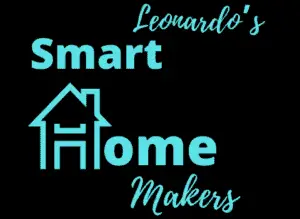Today I’m going to explore the main differences between Synology & Qnap if you are a home assistant user. We will be looking at ease of installation, sensors exposed and possible automations.
Synology DSM integration is much easier to configure into Home Assistant, and it also exposes cameras connected to its surveillance system package. Qnap integration is possible via configuration.yaml but this might put some people off.
Watch my video on YouTube here
Table of Contents
Qnap Integration
As mentioned above, we need to dive into some code. Don’t worry it isn’t that bad!
First you will need a way to access your configuration.yaml (if you don’t know what this is, go checkout my beginners HA course). Feel free to use either file editor or visual studio code.
Find a block where you started using sensors, if you haven’t got it then copy the following:
sensor:
- platform: qnap
host: !secret qnap_ip_address
port: 8080
ssl: false
verify_ssl: false
username: !secret qnap_username
password: !secret qnap_password
monitored_conditions:
- status
- cpu_usage
- system_temp
- cpu_temp
- memory_percent_used
- memory_free
- memory_used
- volume_size_free
- volume_size_used
- volume_percentage_used
- network_tx
- network_rxIf you already have a sensor then just add from – platform.
In your secrets.yaml file add the following:
qnap_ip_address: IP address
qnap_username: USERNAME
qnap_password: PASSWORDNow replace your IP address with the address of your machine normally 192.168.1.XXX (look at the top of your browser). It is best practice to have this static so it doesn’t change.
Then go to the Qnap nas and create a new user (I called mine home assistant) remember to add this user to the administrator group. Replace the username and password and save.
Now feel free to check the configuration and restart home assistant.
Once you are back, check the development file you will find a sensor for each entry in the monitored_conditions list.
If you have multiple network interfaces or volumes you will have one set of sensors for each.
These sensors give you plenty of information to add a dashboard or to use in automations.
Synology Integration
Not much to say here, you should have already seen this in your integration page. Similar to QNAP you need to set an administrator password, enter that and the IP address (static address is preferred). Now check or uncheck if you are using SSL, if you don’t know what this is then just uncheck.
Once you are connected you will have a lot of devices and entities. If you connected up a camera to the surveillance station you can access the status of the ip camera (is it recording or not) and the live footage itself.
A really cool sensor is the up to date, which tells you if you have a system update, sometimes updates can contain crucial security fixes that keep you and your nas safe.
Automations
Apart from monitoring your NAS from your Home Assistant dashboard why not just create some automations?
Here are a few ideas:
1) NAS is too hot
You might be doing some super intensive task or it might be a really hot summer day, checking the temperature of your nas might not be something that you think of during your daily life. Setup an automation to be alerted when this happens, or even better just trigger a smart plug connected to a fan or AC unit to keep the device cool. With Synology you can even shutdown the nas if you think that there is a risk of a fire or damage to disks.
Here I’m checking to see if the system temperature is above 50 degrees and has been for 5 minutes then it will send me an alert on my phone.
- id: "qnap_nas_too_hot"
alias: Qnap Nas is too HOT
description: ""
trigger:
- platform: numeric_state
entity_id: sensor.qnappe_17_system_temperature
above: "50"
for:
hours: 0
minutes: 5
seconds: 0
milliseconds: 0
condition: []
action:
- service: notify.mobile_app_giordano_s_iphone_12
data:
message: Nas is too hot
mode: single2) Running out of Disk Space
Even the largest of NAS eventually will run out of space, you can stay on top of this with a notification when a certain % threshold is reached or just when there is less than a 1gb of space left.
You can go more extreme and have your voice assistant talking to you and telling you how much space you have left. Why not just flash some lights red to get your attention?
Maybe one day we can trigger an order back to Amazon to buy more? Just joking!
Please get in touch with some of your ideas!
Learn more about NAS
I just added a new course to my platform! To find out more https://courses.leonardosmarthomemakers.com/collections

